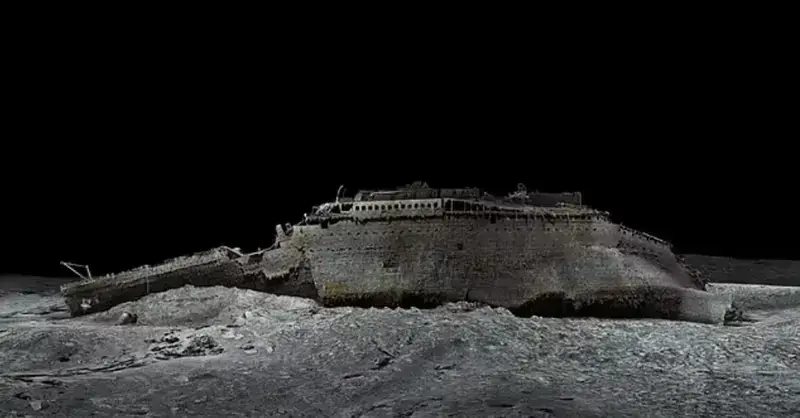Researchers from Magellan Ltd, a company specializing in deep-sea mapping, photographed the sunken liner from new angles at a depth of about 3,800 meters.
Incredibly precise digital scanning revealed how it met its demise. ship was dramatically torn in two.
The scans also revealed an unprecedented type of boiler that was located in the spot where the liner split. Some of the boilers are concave: scientists believe this indicates that they were still operational during the plunge into the icy water.
According to the study leader Chom-Ki Paik from University College London, the Titanic only lightly grazed the iceberg. However, there were punctures “the size of an A4 sheet of paper” in six compartments of the narrow part of the hull.
“These small openings are located along the entire length of the ship. Therefore, water slowly but steadily seeped in; eventually, the compartments were flooded to the top, and the ‘Titanic’ sank,” said Simon Benson, a naval architect from the University of Newcastle.
So it was these small breaches in the hull that caused the rapid sinking of the ship just 2 hours and 40 minutes after the collision with the iceberg, the publication reported. Daily Mail .

The Titanic sank in the northern part of the Atlantic Ocean on April 15, 1912, after colliding with an iceberg while on its maiden voyage from Southampton to New York. Of the more than 2,200 passengers on board, over 1,500 lost their lives. The wreckage of the ship lies on the ocean floor approximately 350 nautical miles from the coast of Newfoundland, Canada. The fragile parts of the vessel are deteriorating so quickly that they may completely disappear within the next 40 years. The site of the disaster was discovered only on September 1, 1985, and this finding became a worldwide sensation.
In a BBC interview, Titanic disaster analyst Parks Stevenson noted that the ship is “the last eyewitness of the catastrophe, and it still has stories to tell.” Therefore, “a complete overview of the entire disaster site is key to understanding what happened here.”
The scan also revealed that during the disaster, steam was still being supplied to the power generation system: the steam valve was in the open position. This confirms eyewitness accounts that the brave team of engineers continued to work even as the ship was sinking. Even in the face of death, the crew, led by engineer Joseph Bell, was loading coal into the furnaces to keep the lights burning on the ship.
According to Mr. Stevenson, “these heroic actions saved countless lives by giving the crew time to safely launch the lifeboats. The team held back the chaos for as long as they could.” And the open steam valve was a kind of symbol of the courage of these people.
A new collection of high-precision scans has supplemented the first batch of digital scanned images from the Magellan Ltd team, which was published two years ago. At that time, the world saw a detailed three-dimensional reconstruction of the shipwreck for the first time. The results of the new work by the scientists will be showcased in the program “Titanic: Digital Resurrection” on Tuesday, April 15 at 8:00 PM on the National Geographic channel.
